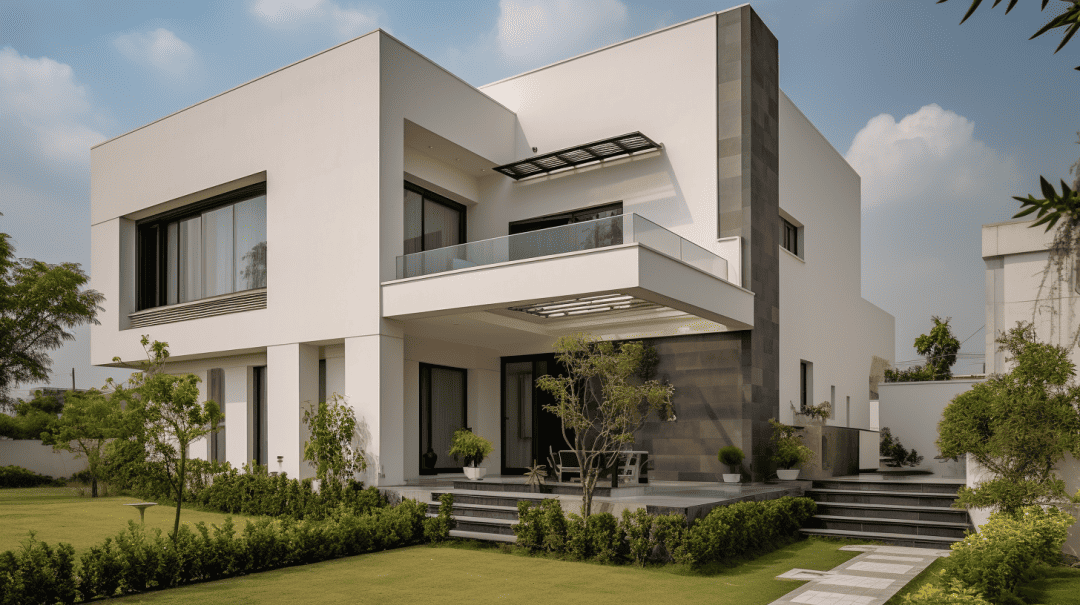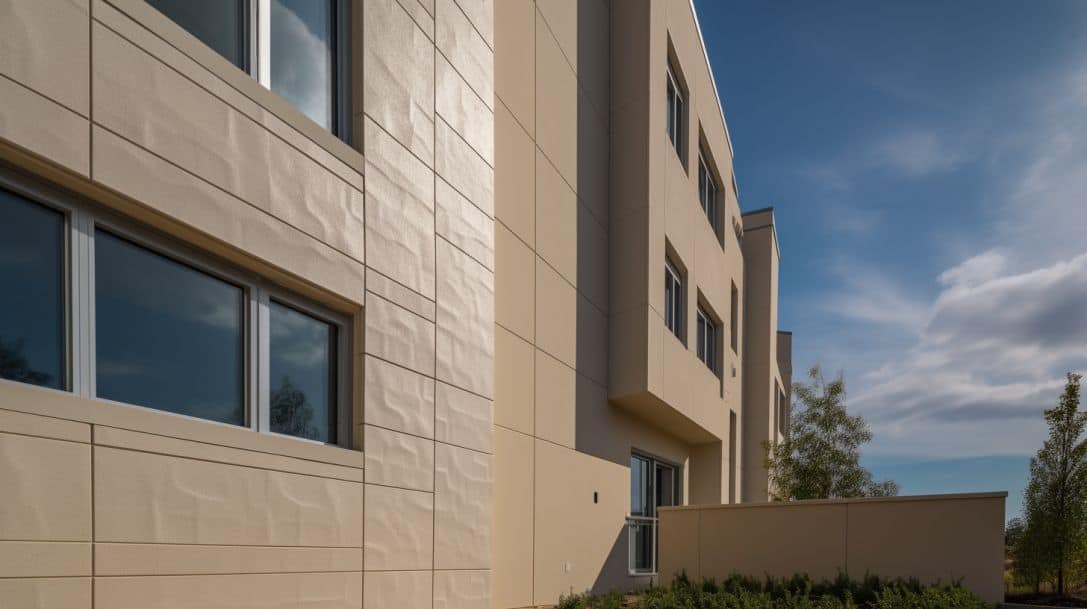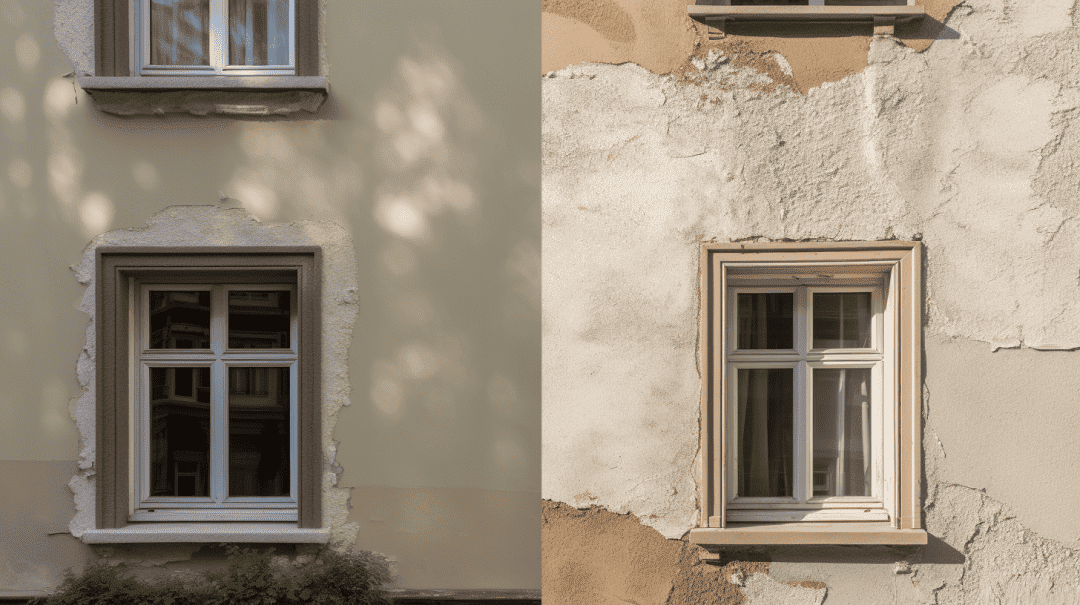Unlocking the Secrets: Why EIFS May Be the Superior Choice Over Traditional Building Materials
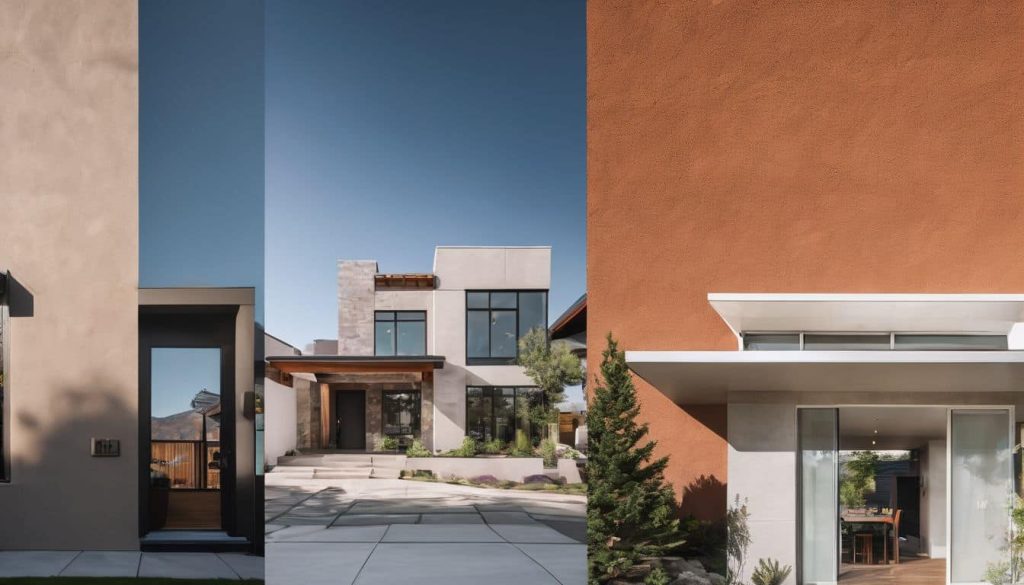
Choosing a cladding material for your construction project can be overwhelming. Are you torn between Exterior Insulation and Finish Systems (EIFS) or traditional stucco? Don’t worry—we’ve got you covered! This comprehensive comparison of EIFS and traditional building materials will empower you to make an informed decision.
Ready to unravel the mysteries of these two popular options? Let’s dive in!
Key Takeaways
- EIFS is a modern building material known for its insulation and moisture resistance but must be installed by professionals due to complexity.
- Traditional stucco, made of sand, cement, and water, can endure rough weather but might crack from stress or impact.
- EIFS has layers of insulating board and protective coats while Stucco uses a wire mesh with several coats over it without any insulating layer.
- EIFS provides better energy efficiency than traditional stucco. Stucco holds up well against harsh conditions but may suffer cracks.
- Choosing between EIFS and traditional stucco depends on your project’s needs like cost – effectiveness, structural stability, weather resistance, insulation needs and maintenance routines.
What is EIFS?

EIFS, or Exterior Insulation and Finish System, is a type of synthetic wall cladding that features an insulation board secured to your building’s exterior, a durable base coat applied over the board with glass fiber reinforcing mesh embedded in it and a finish coat which gives the finished appearance.
EIFS Construction
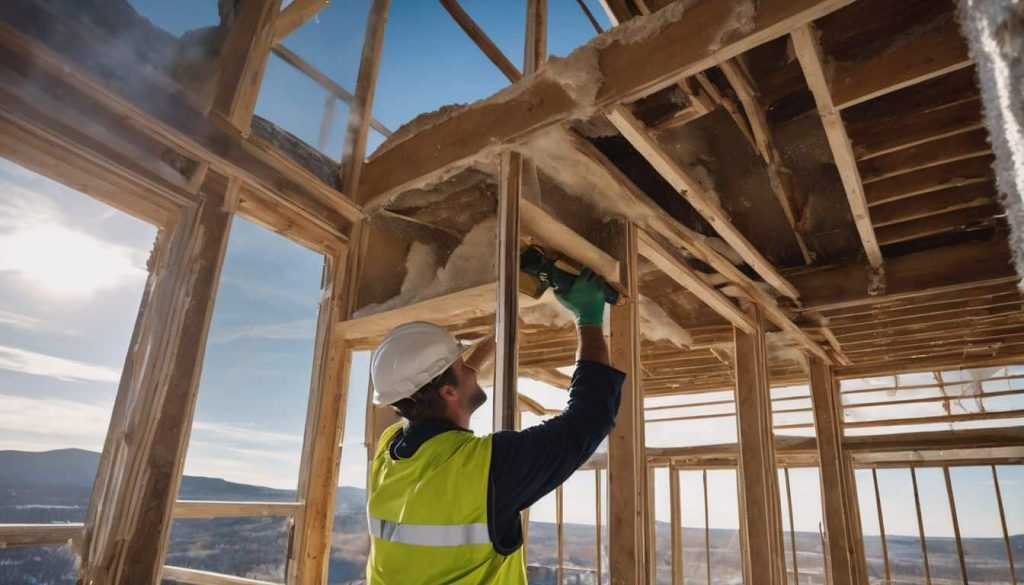
EIFS construction involves applying multiple layers to a building’s exterior for insulation and protection. The first layer consists of foam board or insulation board, which is securely fastened to the wall surface.
This insulation layer provides the base for two additional coats: a base coat and a finish coat. Strong mesh material is embedded into the durable polymer-modified cement base coat, adding strength and impact resistance to the system.
Lastly, an aesthetically versatile finish coat completes the process. This final layer is made from water-resistant materials, offering color and texture options while sealing out moisture.
EIFS installation requires precision and expertise due to its complex multilayered structure – yet another reason why it is often chosen for modern buildings seeking high energy efficiency.
Advantages of EIFS

EIFS, or Exterior Insulation and Finish System, shines as a superior choice in many respects. With its multilayered construction, it boasts remarkable durability over traditional stucco.
Importantly, EIFS is composed of non-porous material that prevents moisture migration through the cladding – an essential feature for any building looking to avoid water-related damage.
Another advantage of EIFS lies in its extensive insulation capabilities. Being 80% lighter than traditional stucco while offering high impact and puncture resistance makes it stand out from other wall cladding options.
Thanks to these features, EIFS also provides improved long-term performance compared to traditional stucco siding. It’s also worth noting this system’s R-value—its ability to measure insulation—offers enhanced protection against different weather conditions and reduces energy costs significantly.
Disadvantages of EIFS
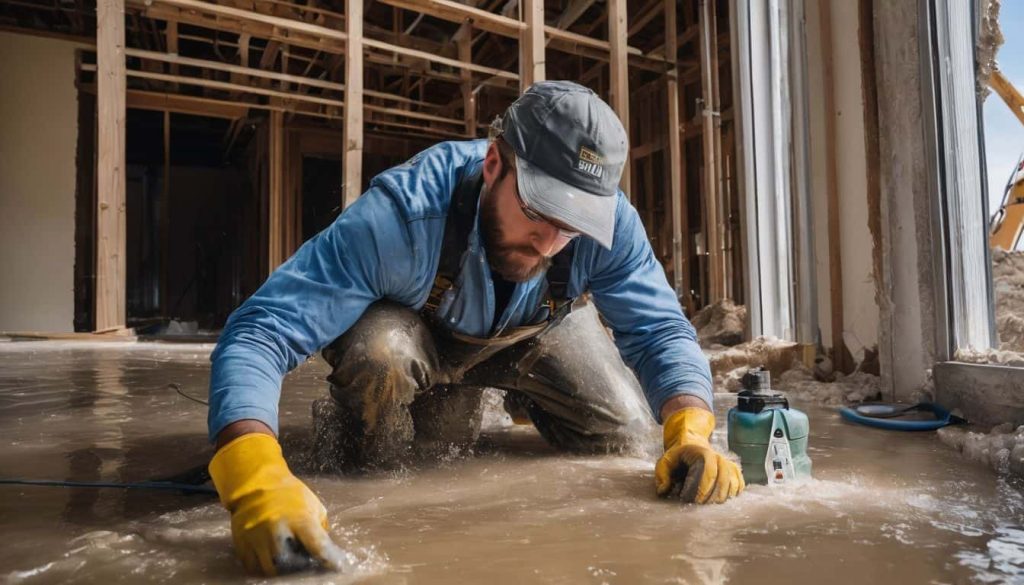
Though EIFS offers various benefits, it also has some notable downsides. This system is not porous, which can lead to trapped moisture and resulting issues if water manages to seep behind the cladding.
If not well-managed, this dampness may potentially cause mildew or rot in underlying structures. In addition, EIFS requires specialized installers due to its complex multilayer application process – a factor that can increase installation costs considerably.
Lastly, while synthetic stucco proves more impact-resistant than traditional stucco, heavy impacts from hail or hard objects can still cause damage needing professional repair.
What is Traditional Stucco?

Traditional stucco, also known as cement stucco, is a top-notch building material made from sand, Portland cement and water. It’s well-known for its durability and unique texture. The application of traditional stucco involves layering it over lath (a support base), usually in three coats: scratch coat, brown coat and finish coat.
This exterior siding stands the test of time due to its strength but can be prone to cracking if not maintained properly.
Stucco Construction

Stucco construction involves a meticulous process to ensure durability and resistance to the elements. It starts with the application of a wire mesh over a foam board attached to the exterior wall, providing structure for the stucco mix.
A base coat is then applied followed by subsequent layers – often three in total including a finish coat. Made from portland cement, sand, lime and water, traditional stucco dries into an extremely hard and sturdy surface.
This labor-intensive procedure results in structures that can withstand harsh weather conditions while offering attractive aesthetics. However, despite stucco’s undeniable strength and stability, it may develop cracks if not correctly maintained or exposed to severe movement or stress factors like earthquakes.
Advantages of Using Stucco
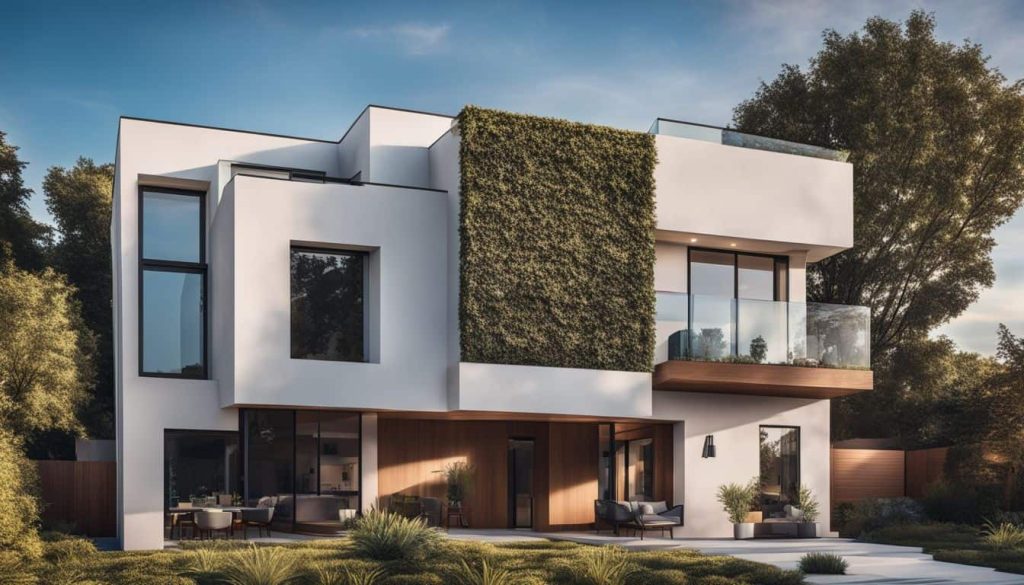
Stucco is revered for its numerous benefits, especially when it comes to durability and weather resistance. Its strength often outpaces other building materials due to low water absorption and sturdy construction.
Additionally, stucco siding adds a layer of protection against the elements. Over time, this traditional material proves itself with long-term performance that withstands the test of seasons.
Another significant advantage lies in Stucco’s cost-effectiveness. It offers excellent value for money considering its longevity and minimal maintenance requirements compared to other wall cladding options such as EIFS or synthetic stucco.
Furthermore, architects appreciate stucco for its aesthetic versatility; it can be shaped and tinted according to design preferences providing flexibility while maintaining structural integrity at the same time.
Disadvantages of Using Stucco

Despite its many benefits, traditional stucco also carries several disadvantages. Its heavy weight can put stress on the structure over time and potentially lead to structural issues.
Stucco’s hard surface is prone to cracking due to building settlement or sudden impacts, which could require costly repairs. Additionally, while it resists water absorption, any moisture that does penetrate can become trapped with no way out – leading to potential mold growth or water damage within walls.
Finally, installing stucco involves a labor-intensive process; not only is applying the multiple coats time-consuming but the curing period between each coat can delay project completion times significantly.
Key Differences Between EIFS and Traditional Stucco
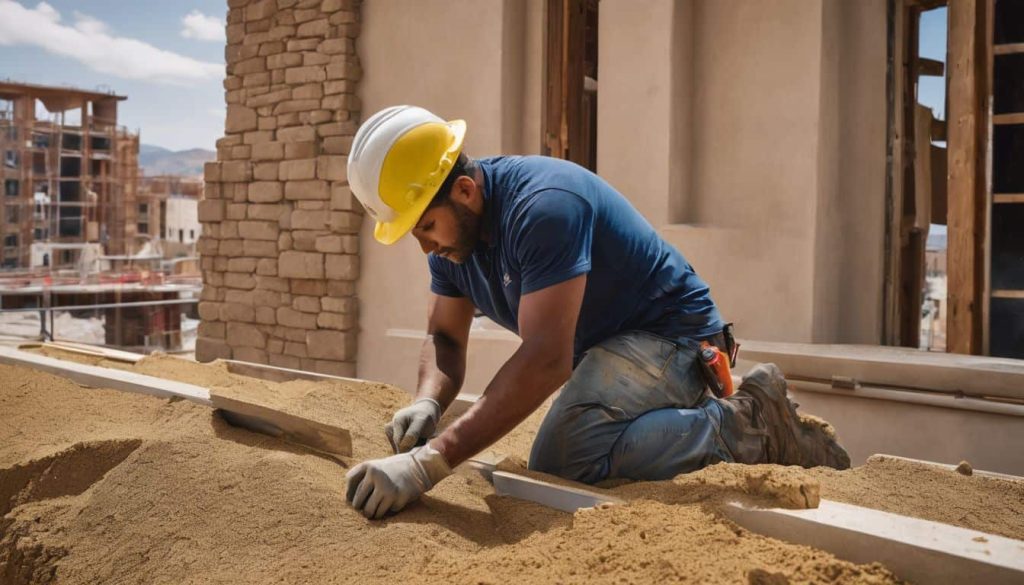
Dive into the nitty-gritty of EIFS and traditional stucco, exploring their stark differences in installation, Wall breathability, crack resistance, and maintenance routines – facets that could ultimately influence your choice between these two popular construction options.
Stay tuned to unveil more on this intriguing comparison!
Installation
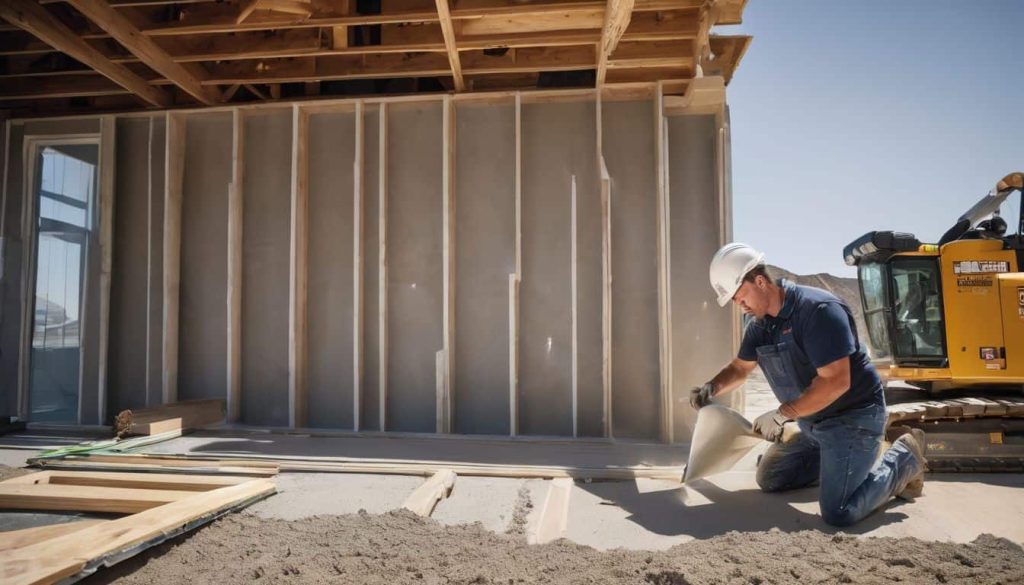
The process of installing EIFS differs from that of traditional stucco. EIFS is more complex and time-consuming due to its multiple layers, including an insulating foam board layer attached to the exterior wall with adhesives or mechanical fasteners.
A base coat applied on top incorporates a mesh for reinforcement followed by a finish coat for aesthetics and weather resistance. On the other hand, traditional stucco installation involves applying three coats of cement mixture over wire lath directly onto the structural wall without any insulation layer in between.
This method makes it faster and less challenging to install than EIFS but lacks the thermal insulation benefits offered by EIFS systems.
Wall Breathability
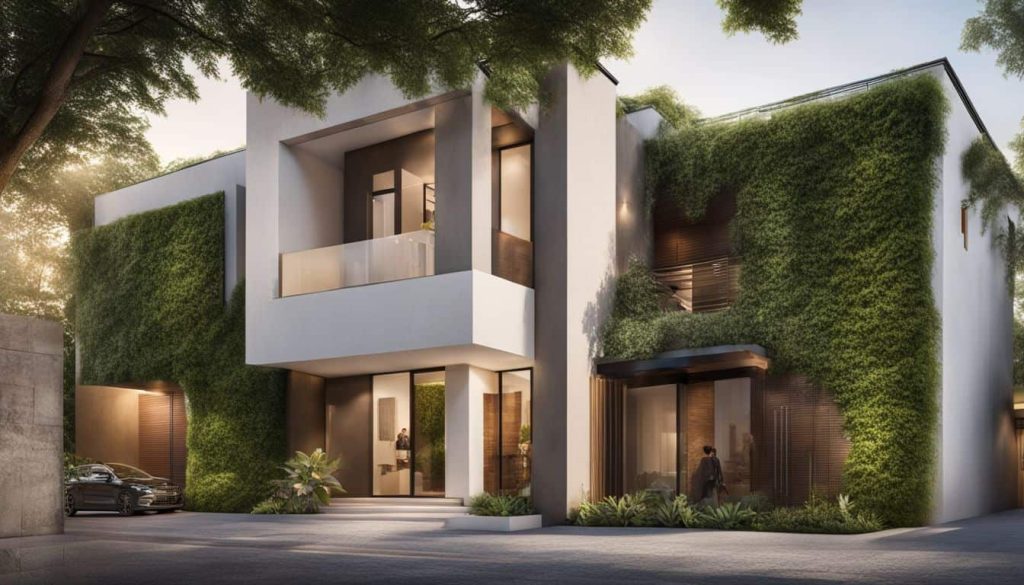
Traditional stucco allows for wall breathability which means it lets water vapor pass through. This quality protects the building from potential moisture damage and reduces the likelihood of mold.
Traditional stucco’s porous nature functions as a natural form of ventilation, keeping interior spaces fresh and dry even in humid weather conditions.
On the other hand, EIFS is a non-porous material and does not allow moisture to migrate through its surface. However, this design limitation has been mitigated by modern EIFS versions with advanced drainage systems.
These systems help prevent water accumulation behind the cladding thereby addressing concerns related to dampness or mold formation that could compromise structural integrity over time.
Crack Resistance

The flexibility of EIFS allows it to handle small shifts in a building’s structure, helping prevent cracks that could otherwise appear. Traditional stucco, although known for its strength and resistance to the elements, is less resilient when it comes to crack prevention due to its rigid nature.
This durability factor makes EIFS a great option where weather conditions vary widely. Synthetic stucco differs from traditional stucco not only by material but also by performance, especially when it comes to resisting cracks.
Maintenance
Keeping your building’s exterior in top condition requires regular maintenance. Traditional stucco is rugged and enduring, usually needing minimal upkeep – a fresh coat of paint can often invigorate its appearance.
On the other hand, EIFS systems are less demanding when it comes to maintenance due to their resistance to cracks and durability brought about by multiple layers including fiberglass.
As EIFS doesn’t absorb water like traditional stucco does, issues related to moisture damage are significantly reduced. It’s important to note that although EIFS is puncture-resistant, high-impact damage could require professional repair services for optimal results.
Pros and Cons of EIFS

Exterior Insulation and Finish System (EIFS) boasts several advantages, making it a popular choice among builders and homeowners. Primarily known for its superior insulation capabilities, EIFS significantly reduces energy consumption due to its high R-value.
The material is also lightweight – about 80% lighter than traditional stucco – which simplifies the installation process and puts less stress on structural components. Impact resistance is another selling point of EIFS; composed of various layers including fiberglass, this robust outer layer helps prevent punctures.
Despite the benefits, there are some drawbacks with EIFS that warrant consideration. The most noteworthy concern revolves around moisture control. While being non-porous means moisture can’t migrate through the cladding, inadequate sealing or improper installation could lead to trapped water inside walls causing mold growth and structural damage over time.
Additionally, while EIFS fares well under standard conditions, it may not stand up as strongly as traditional stucco against harsh weather elements like hailstorms or strong winds due to lower impact resistance.
Moreover, compared to conventional building materials like brick or stucco siding, maintaining an EIFS-clad structure can be more demanding because any minor surface damage needs immediate repair to avoid compromising the system’s integrity.
Ease of maintenance could factor into your decision depending on your property type or personal lifestyle requirements.
Pros and Cons of Traditional Stucco
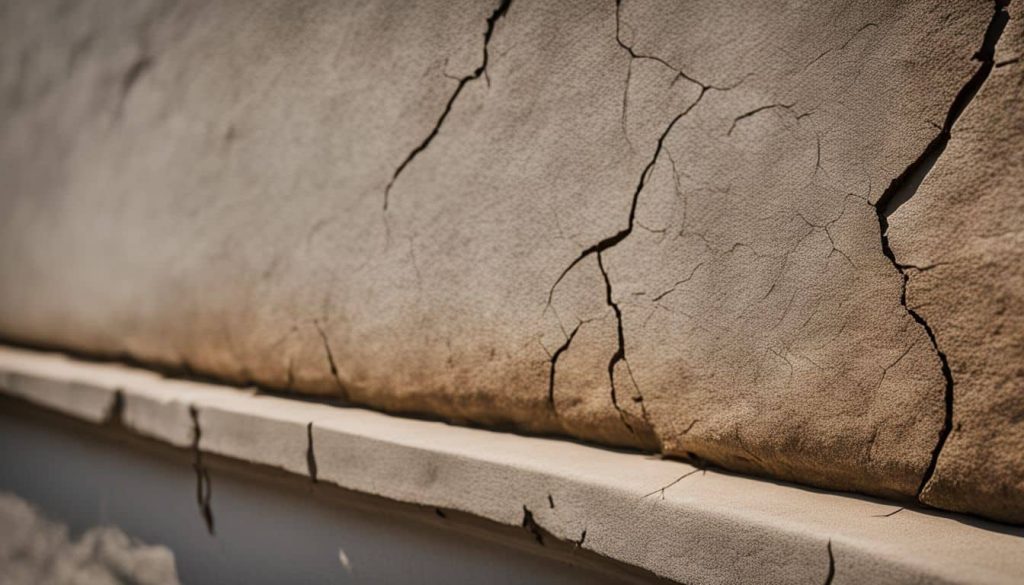
Traditional stucco stands out for its undeniable strength and resistance to harsh weather conditions. It has a low water absorption rate, significantly reducing the likelihood of damage caused by moisture accumulation.
This construction material is also praised for its long-lasting durability, making it a suitable choice for structures that require robust cladding.
However, traditional stucco does have some drawbacks worth considering. Its weight can be an issue; being noticeably heavier than synthetic options like EIFS, this could impact structural stability over time or make installation more challenging.
Furthermore, while resistant to minor wear and tear, traditional stucco can become vulnerable to cracks if exposed to significant shifts in temperature or strong physical impacts.
Which One to Choose: EIFS or Traditional Stucco?
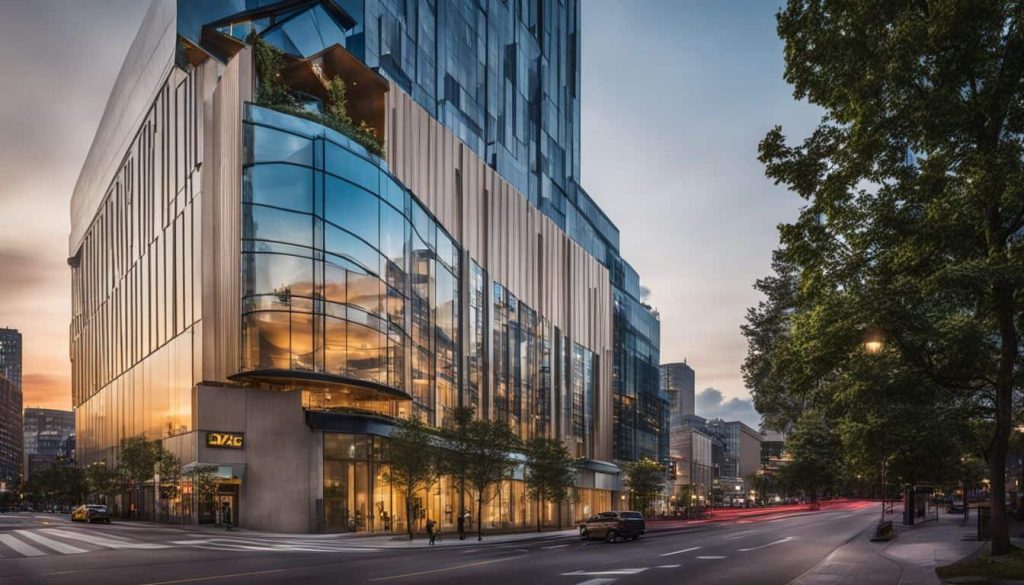
The choice between EIFS and traditional stucco depends on your specific needs and preferences. With its higher resistance to impact, puncture, and water damage combined with enhanced insulation capabilities, EIFS generally offers superior protection compared to traditional stucco.
It is also 80% lighter than its counterpart though this doesn’t compromise durability since it contains fiberglass.
Traditional stucco, however, isn’t without its strengths. Known for low water absorption rates and considerable hardiness against the elements, it is ideal for structures requiring a sturdy external covering.
Traditional stucco also functions differently from an operational standpoint which might make it more suitable for some homeowners who prefer a time-tested solution rather than a modern one like EIFS.
Carefully evaluate both options in light of your building’s nature – commercial or residential – as well as regional preference before making your decision.
Considerations for Commercial Projects
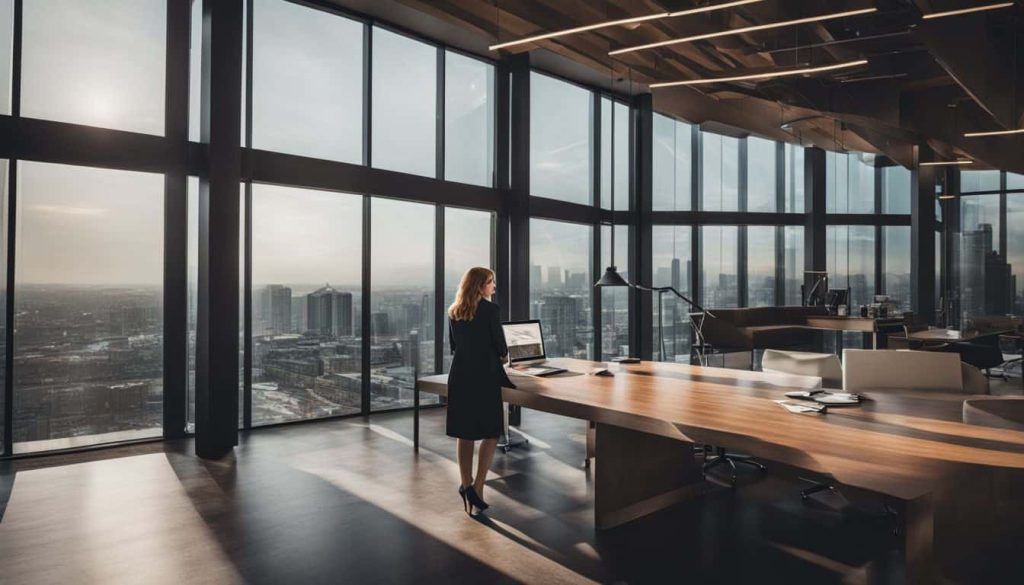
Commercial projects often demand durability, energy efficiency, and cost effectiveness when choosing between EIFS (Exterior Insulation and Finish System) or traditional stucco. With its impressive impact resistance and lightweight properties, EIFS offers an attractive solution to these project requirements.
The system is 80% lighter than traditional stucco while still providing superior protection against the elements.
Energy efficiency plays a crucial role in commercial building design, particularly as environmental regulations become increasingly stringent. Here too, EIFS shows considerable promise with an R-value measuring insulation capabilities that outperforms many other wall cladding options.
This can result in significant savings on heating and cooling costs over time.
From a maintenance standpoint, it’s worth noting that though both systems are durable, synthetic stucco rarely needs major repairs due to its toughness against common building deflections.
In terms of aesthetics too – whether it’s for fresh installations or retrofitting options – EIFS provides more design flexibility giving architects room to explore their creativity while adhering strictly to construction standards and code compliance.
However, if structural integrity is paramount above all else – perhaps due to regional preferences – then traditional hard-coat stucco might be the preferred choice given its renowned strength and water resistance qualities from low absorption characteristics.
Conclusion
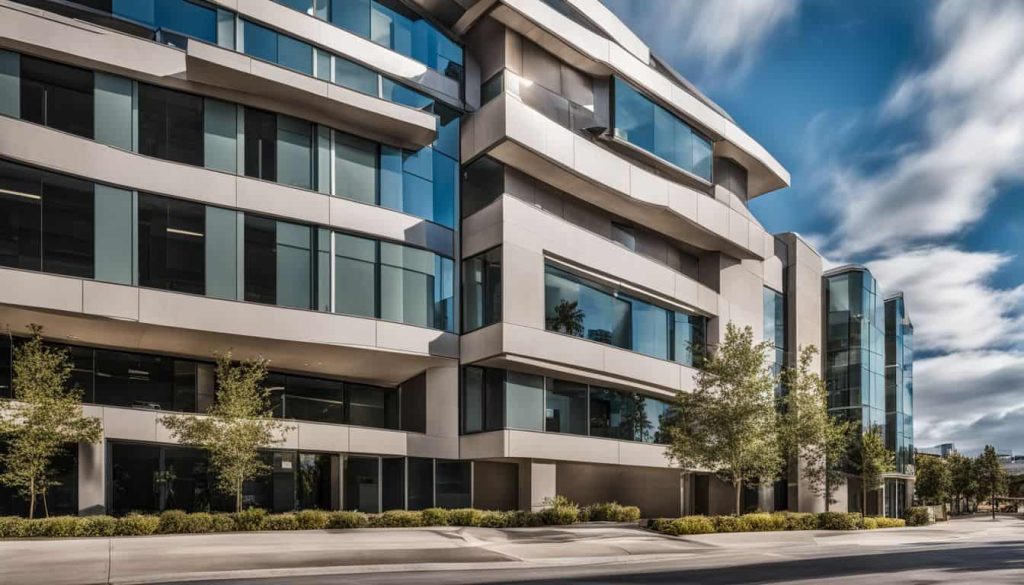
Selecting between EIFS and traditional stucco depends on many factors, including your building’s specific needs and environmental conditions. Both offer unique advantages, from the superior insulation capabilities of EIFS to the durability of traditional stucco.
Always consider these factors along with cost-effectiveness, energy efficiency, maintenance requirements when deciding which material is best for your project.
FAQs
What is the difference between EIFS and stucco?
EIFS, also referred to as synthetic stucco, is made from synthetic materials while traditional stucco is typically made from Portland cement, sand, and lime.
How are EIFS and traditional stucco applied?
EIFS consists of layers of an insulation board secured with adhesive or mechanical fasteners while stucco is applied in three coats after preparing the wall assembly.
Are there differences in durability between EIFS and traditional Stucco?
Yes! Properly installed EIFS has proven to be more durable than traditional stucco due to its flexibility whereas stucco can crack over time if not maintained properly.
Can I use both residential and commercial buildings?
Certainly! Both systems provide excellent exterior cladding options for both residential vs commercial use subject to local building regulations.
Which system performs better for energy efficiency?
Structures with EIFS generally have a higher R-value than regular structures with EPA-approved insulation which results in significantly greater energy savings.
Do these systems impact environmental sustainability differently?
In terms of life-cycle analysis, each product carries an environmental footprint; however, given that it requires less resource-intensive material usage and provides better thermal properties leading to reduced HVAC emissions – using EIFs might show a lesser environmental impact compared to traditional Stuccos.

